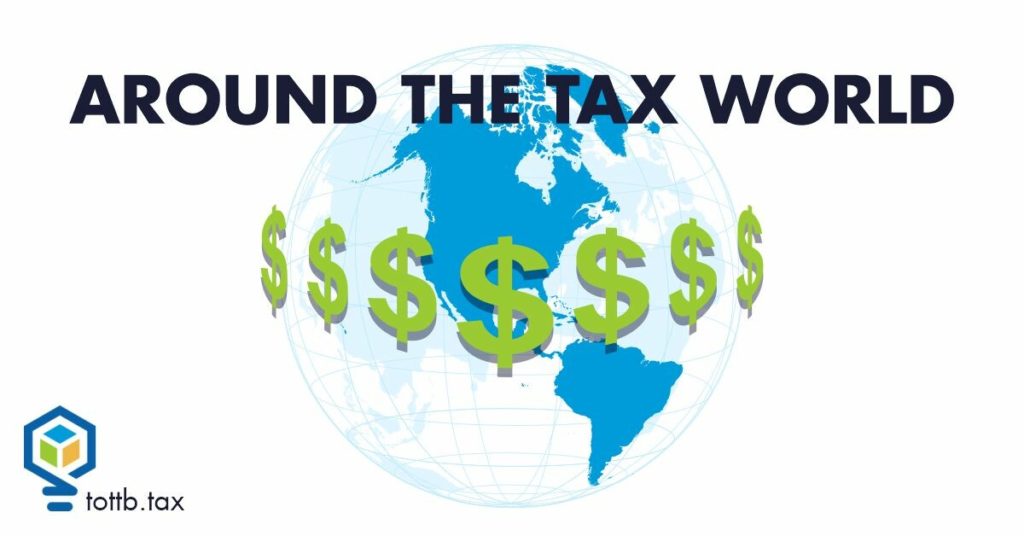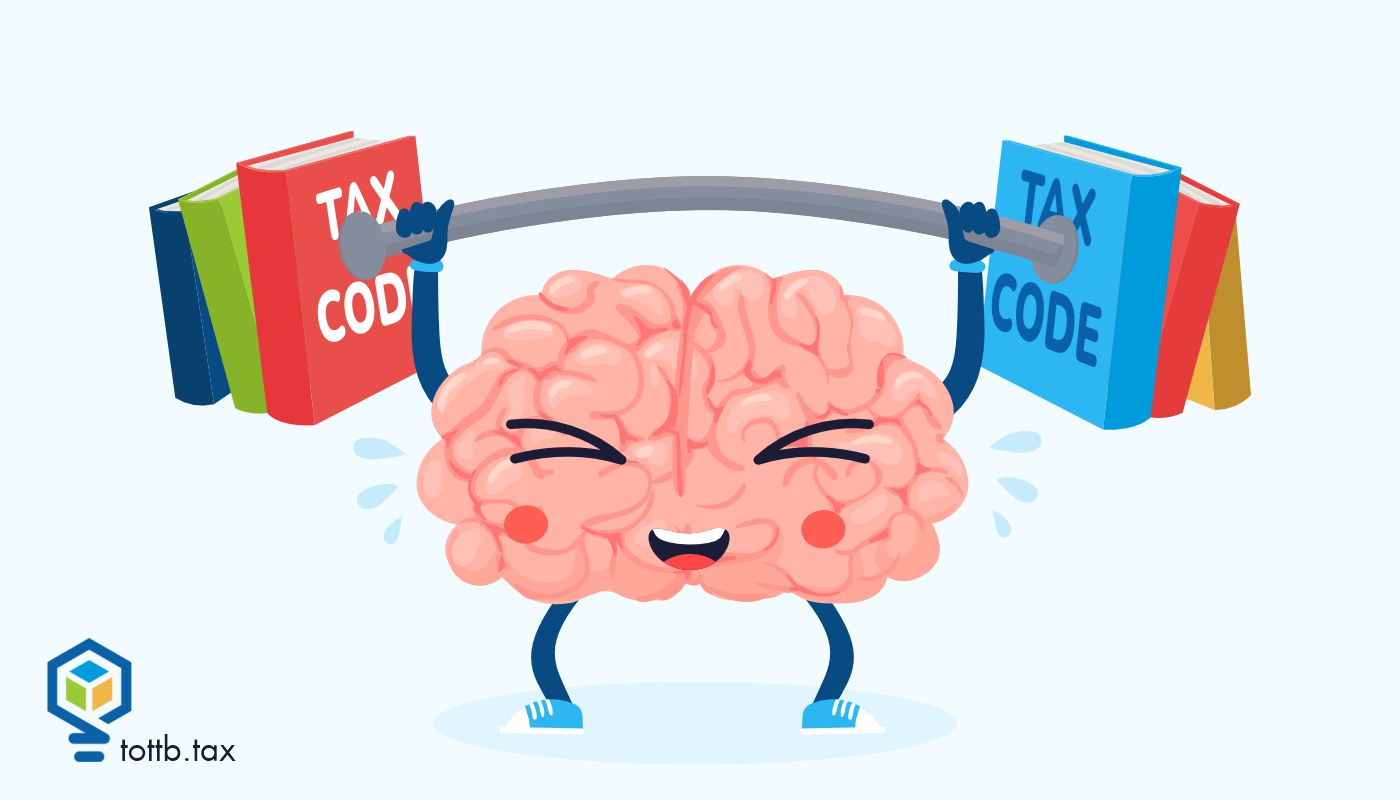
At Around the Tax World, you can find out all about what’s going on in the wonderful, worldwide world of tax. Every month, we’ll feature a few mini-articles on what’s been going on in the world when it comes to tax, and fully available for viewing even if you don’t have a subscription.
If you wish to subscribe and gain access to all articles on the site, be sure to check out the benefits of doing so here!
Check out what’s happening all around the world of tax!
In The Headlines
- Want to chat with your favorite celebrity? A new startup is introducing celebrity “AI clones” that allow users to engage in simulated dialogue with well-known online personalities. The company Me4u has created chatbots that use approved content from the celebrities themselves to mimic their personalities and engage in text exchanges. Celebrities who opt in will earn revenue based on how many users engage with their clones. Public figures participating in the initial launch include motivational speaker Jesse Pedigo; keto specialist and nutritionist Natalia Lieshchynska; comedian and public speaker Wilfred Rivera; and wellness expert Rebecca Jackson.
- Hunter Biden is suing the IRS, claiming that two agents illegally shared his tax information. The lawsuit claims that Gary Shapley (from International Tax and Financial Crime) and Joseph Ziegler (from the IRS’ Criminal Investigation division) violated the Privacy Act by disclosing information about the Hunter Biden tax investigation to Congress and several news outlets. Ziegler and Shapley had both testified against Hunter Biden, stating that the Justice Department gave the president’s son preferential treatment during the investigation.
- WhatsApp is dipping its toe in the world of social media with its new feature Channels. This broadcast tool allows users to receive updates about celebrities, sports teams, and thought leaders. Meta, owner of WhatsApp, has launched the tool in 150 countries, and users will be able to see recommendations based on their region and the channel’s overall popularity. Channels is separate from the chat function and allows users to choose who to follow and who can see them. Channels is currently restricted to celebrities and personalities, but eventually, all users will be able to create Channels.
What's New In The Tax World?
Could the end of the expanded Child Tax Credit be the reason for the recent rise in child poverty?
In the early days of the COVID-19 pandemic, the Biden administration expanded the existing child tax credit. For children ages six and above, this move upped the amount from $2,000 to $3,000 or to $3,600 if the child is under age six. Families earning up to $150,000 per year (or $112,500 for single parents) qualified for the credit.
These increased benefits expired at the end of 2021, at the same time that federal stimulus checks were discontinued. The effects seemed to be immediate: in 2022, the U.S. child poverty rate jumped up from 5.2% in 2021 to 12.4%, according to the U.S. Census Bureau. By comparison, in 2021 the child poverty rate had fallen 46% to the lowest level on record. Census officials are now saying that child poverty has returned to its pre-pandemic levels. However, this report does differ from the 2022 official poverty rate, which looks only at income before taxes and does not include stimulus payments and tax credits.
This year, a number of other pandemic benefits also ended, including expanded food benefits and Medicaid protections that kept people enrolled in health benefits. Since the end of Medicaid protections, over 760,000 children have lost coverage, according to researchers at Georgetown University. The federal government even issued a warning that many children who were unenrolled are actually still eligible for the program.
Families in need of financial assistance may still be eligible for existing tax breaks and can apply through their next tax return. The current Child Tax Credit allows taxpayers earning no more than $200,000 (or $400,000 for couples filing jointly) to receive the full credit. Parents and guardians who come in above this income threshold may still be eligible for a partial credit.
Lower-income households may also qualify for the Premium Tax Credit, which is available to those who are at or above 100% of the federal poverty level, or the Earned Income Tax Credit, which provides a tax break to low-to-moderate-income workers and families.
State-By-State Updates
- Maryland ends its fiscal year with leftover cash, the result of a 5% increase in tax revenue. The state comptroller recently shared the good news that Maryland’s general funds now stands at $2.584 billion. This includes an unassigned balance of $555 million from the past year. Contributing to this high balance was a spike in non-wage income in 2022. Per the state’s laws, this money was funneled into Maryland’s Rainy Day Fund and Fiscal Responsibility Fund. The state has already set aside $2.392 billion for next year’s operations, but the remainder of the money has yet to be allocated.
- New Mexico has run out of money for its solar tax credit… as applications outweighed the state’s $12 million annual limit. The program offered a 10% tax credit to offset the cost of installing a home solar energy system. However, rebates are awarded on a first-come, first-serve basis, which means that latecomers simply miss out since the tax credit must be approved in the same year that the solar installation was fully permitted. Between 2020 and 2022, over 1,400 homeowners applied for the credit too late, and another 500 are expected to miss out this year.
- As the New York cigarette tax increases, residents question the effectiveness of this tax measure. The tax recently increased by $1, landing at $5.35 and making New York’s cigarette tax the highest in the country. Though the Surgeon General has reported that higher tobacco taxes can help reduce smoking rates, data from the Tax Foundation suggests that higher prices may also result in more illegal smuggling of cigarettes from other states. New York last increased its cigarette tax in 2010, after which cigarette smuggling rates rose by 13%.
- The Wisconsin legislature approves a $3 billion state income tax cut… that may never make it past the governor’s desk. The Republican-led bill would decrease individual income tax from 5.3% to 4.4% for taxpayers earning between $27,630 and $304,170 (or between $18,420 and $405,550 for married couples filing jointly). Governor Tony Evers has already stated that he would veto the bill, stating that cutting taxes could result in the state losing $2.5 billion in federal pandemic relief funds.
Tax Planning Tips
Roth IRA conversions can reduce taxes in retirement—but taxpayers need to consider these factors before making the leap
Roth IRAs have become increasingly popular as a way to reduce future taxes. By transferring money from a standard IRA to a Roth IRA, taxpayers can get the benefits of compounding growth and future tax-free withdrawals. However, taxpayers also need to consider the cost of the upfront bill, their current and future tax brackets, and the timing of the transfer before determining if a Roth IRA is the right investment.
Though the promise of tax-free withdrawals is appealing, this means that taxpayers have to pay tax on these funds upfront. Converting IRA funds to a Roth IRA requires thorough planning to avoid triggering IRS penalties or depleting your savings. Your higher taxable income will also likely be higher in the year of the transfer, which can mean higher Medicare premiums or becoming ineligible for other tax benefits.
Taxpayers who are currently in a lower tax bracket may be better poised to open a Roth IRA, since they will pay less in taxes on the transferred funds. If you expect to see an increase in income in future years, now may be the time to employ the Roth IRA strategy.
The IRS plans to hire 3,700 new employees in its efforts to increase its audit capabilities—what does this mean for the average taxpayer?
With the help of increased funding from the Inflation Reduction Act, IRS embarked on its first wave of hiring in 2022, which focused on customer service roles. The agency brought on around 4,000 new employees, including 700 workers hired this year to open or reopen 42 Taxpayer Assistance Centers.
This second wave of hiring will focus on bringing in more tax accountants and higher-graded revenue agents who will tackle more complex tax issues. Hiring will span over 250 locations
NOT A MEMBER YET?

SUBSCRIBE TO GET ALL OF OUR
GREAT ARTICLES AND RESOURCES!
CURRENT EDITION

An Analysis of the OBBBA’s Trump Accounts (Part 1)
The One Big Beautiful Bill Act, signed into law by President Trump on July 4, 2025, added a new tax saving tool for minors, the aptly named Trump Accounts. In this article, I go over the details of the new Trump Accounts. In part II, I will discuss some of the potential tax planning opportunities and pitfalls related to the new accounts.

Student Loans After the OBBBA Part 1: New Rules Every Advisor Needs to Know
Big changes are coming to the student loan world (yet again), and they’re not the kind you can just skim past. The One Big Beautiful Bill Act (OBBBA) has reshaped how much students will be able to borrow, how they’ll repay it, and which programs will qualify for federal aid going forward. For financial and tax professionals, these shifts aren’t just policy updates. They’ll set the stage for how you’ll advise clients for years to come… and could even change the way you manage your own student loans. In Part 1 of our OBBBA student loan series, we break down the nuts and bolts of these new rules to help advisors (and borrowers) get some clarity on the collective question: “Seriously, what’s going on with student loans?”

IRS And Courts Have Wisdom to Offer Startup Businesses
There is a wealth of business wisdom in a fairly unlikely area. All the businesses involved lost money, sometimes enormous sums. The source is the litigation and regulation around Code Section 183 of the Internal Revenue Code – Activities not engaged in for profit. In order to deduct those losses against other income, taxpayers need to convince the IRS or the court that they had an honest objective of making a profit. The determination of whether an activity is carried on for profit is made by reference to objective standards. Is it possible that following those standards might contribute to you being profitable? It’s worth thinking about.

